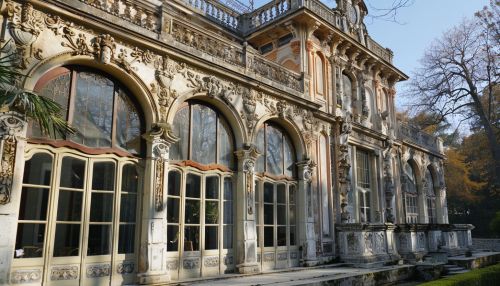19th-century architecture
Introduction
The 19th-century architecture marks a period of significant architectural evolution, characterized by the emergence of new architectural styles and the advancement of construction technologies. This era witnessed the rise of various architectural movements such as Gothic Revival, Italianate, Second Empire, Queen Anne, and Art Nouveau, among others. These styles, which were born out of the Industrial Revolution, transformed the urban landscape across Europe and North America.


Historical Context
The 19th century was a time of rapid industrialization and urbanization, which had a profound impact on architecture. The Industrial Revolution, which started in the late 18th century, continued to influence the architectural designs and construction techniques throughout the 19th century. The availability of new materials such as iron, steel, and glass, along with the development of new construction technologies, allowed architects to experiment with new forms and designs.
Architectural Styles
Gothic Revival
The Gothic Revival style, also known as Victorian Gothic, emerged in the early 19th century. This style was characterized by elements of medieval Gothic architecture such as pointed arches, steep-sloping roofs, and intricate ornamentation.
Italianate
The Italianate style, which originated in Britain, was inspired by Italian Renaissance architecture. This style, popularized in the mid-19th century, was characterized by its symmetrical design, low-pitched roofs, and ornamental cornices.
Second Empire
The Second Empire style, also known as Napoleon III style, originated in France during the reign of Emperor Napoleon III. This style was characterized by its mansard roofs, elaborate ornamentation, and imposing facades.
Queen Anne
The Queen Anne style, which emerged in the late 19th century, was characterized by its asymmetrical design, complex roof structures, and extensive use of decorative elements.
Art Nouveau
The Art Nouveau style, which emerged in the late 19th century, was characterized by its organic forms, intricate ornamentation, and extensive use of glass and iron.
Impact of Industrial Revolution
The Industrial Revolution had a profound impact on 19th-century architecture. The availability of new materials such as iron, steel, and glass, along with the development of new construction technologies, allowed architects to experiment with new forms and designs. This led to the construction of buildings with larger windows, higher ceilings, and more open floor plans.
Conclusion
The 19th-century architecture marked a period of significant architectural evolution, characterized by the emergence of new architectural styles and the advancement of construction technologies. The architectural movements of this era, born out of the Industrial Revolution, transformed the urban landscape across Europe and North America.
